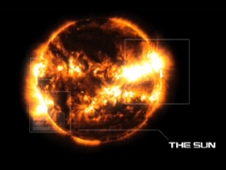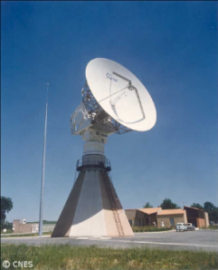
The STEREO mission provides new information on CMEs as part of the international space weather program. One of the probes orbits the Sun ahead of Earth, distancing itself from it, while the other orbits our star behind the Earth, and gradually gets distanced by it. The two probes currently form a 45° angle with Earth and the Sun. With this angle, CMEs can be studied sideways which enables to map their structure in 3D.
The 3D images thus formed from the data of SECCHI are then combined with the in situ data of other instruments on the probes, as well as with data from other space and ground observatories (the radioheliograph from the radio-astronomy station of the Observatory of Paris in Nançay is among them).

Those observations complete our 3D vision of these phenomena, from their origin on the star to the Earth vicinity. They study the magnetic energy storage processes and the physical conditions which cause the ejections, and study their progression in the interplanetary medium. This should dramatically increase the forecast capabilities on the effect of these perturbations on the Earth environment.
A network of ground stations, set up by NOAA, constantly receives data in near real time from STEREO, which are then processed and interpreted by the French scientific teams.
A CNES antenna in the Toulouse area was set up to complete this first global space weather network.